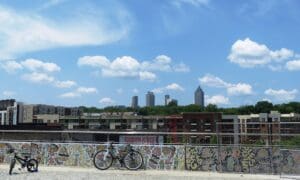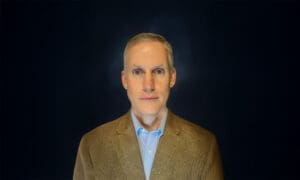I was 14 years old and an eighth-grade student when the events unfolded in Selma, Ala., 50 years ago. When the news was reported, featuring films of Selma, I was horrified.
I don’t recall that my parents had any commentary on the news reports so I was left to draw my own conclusions.
I couldn’t understand why the police, who I was taught to honor and respect, would turn their fury upon unarmed black and white men, women, and even children. When I discovered that blacks were marching for the right to vote, I was even more confused.
In eighth-grade civics class, we had learned that voting was an American right. What did they mean that they weren’t allowed to vote? Everyone over the age of 21 could vote. Couldn’t they? It was their right! Wasn’t it?
It was still a year and a half away before our own school system would be integrated. In Kingsport, Tenn., there was a school system that whites attended and one where blacks attended. I didn’t think anything about it as it was just the way things always had been.
There were symbols of segregation everywhere in my hometown. Water fountains, theater entrances, and waiting areas in the bus stations were marked “white only” and “colored only.” It was the way things always had been.
The working class neighborhood I grew up in, the elementary school and now the junior high school I attended, had only white residents and students. But I didn’t think about it. It was just the way things always had been.
Selma, and other cities like it, changed all that. What had formerly been accepted as the way things had always had been were now seen as ugly, hateful, racist, and brutal.
I began to watch the news more and saw other disturbing images — black students turned away from white schools or colleges, people marching for an equality that I thought everybody already had, dogs let loose on unarmed citizens, water hoses blasting grandmothers who were asking for their rights.
And the speech. As a white kid in a segregated South, I was touched by one of the most famous speeches in American history, the “I have a dream” speech that spoke of a day when all people would be judged by the content of their character and not the color of their skin.
And then, the Reverend Doctor Martin Luther King, Jr., was gunned down — murdered — in Memphis. In Tennessee. In MY state.
I was a junior at Dobyns-Bennett High School when King was assassinated on April 4, 1968. By that time, the school systems had been merged and I had played a football season on an integrated team. One of our coaches was black as were several teachers.
We didn’t have the upheaval, the riots, the harsh words and actions that some parts of the country experienced. What I had were teammates, some of whom were black and some of whom were white. By the time King was killed, we had become friends.
Oh, some people of both colors were rabble rousers, but they were a very small minority. The country had already begun to change. But when Dr. King died, the country, my state, my school held its breath — and then we mourned.
In the last several years, I have been to Selma many times and have crossed the Edmund Pettus Bridge more times than I can count. Each time I think about what happened there on that day so long ago — the 600 peaceful marchers who were attacked by police using tear gas and billy clubs.
A photo published nationwide showed bodies lying on the bridge where they fell. The public was shocked and then outraged. The dormant conscience of America had been awakened in Selma and things would never be as they had always been.
In August, the Voting Rights Act of 1965 was passed, due in no small part to the sacrifices made in Selma.
Today, there is a spiritual revival occurring in Selma. Pastors, who don’t pay attention to the color of one’s skin, cooperate with each other and people worship together on a scale unthinkable 50 years ago. Selma needs a financial revival and opportunity is rampant in the city for investors who can see the possibilities.
Selma is becoming a civil rights Mecca for many and a movie has been released about those days on the Pettus Bridge. Oprah Winfrey, one of the richest women in America, and Barack Obama, President of the most powerful nation on the planet — both African Americans — visited Selma just days ago.
Things in America are certainly not the way they have always been and that’s a good thing. And for that progress, America has Selma, and the courageous people who dared to dream of a better day, to thank.
[David Epps is the pastor of the Cathedral of Christ the King, Sharpsburg, GA (www.ctkcec.org). He is the bishop of the Mid-South Diocese which consists of Georgia and Tennessee (www.midsouthdiocese.org) and the Associate Endorser for the Department of the Armed Forces, U.S. Military Chaplains, ICCEC. He may contacted at [email protected].]












Leave a Comment
You must be logged in to post a comment.